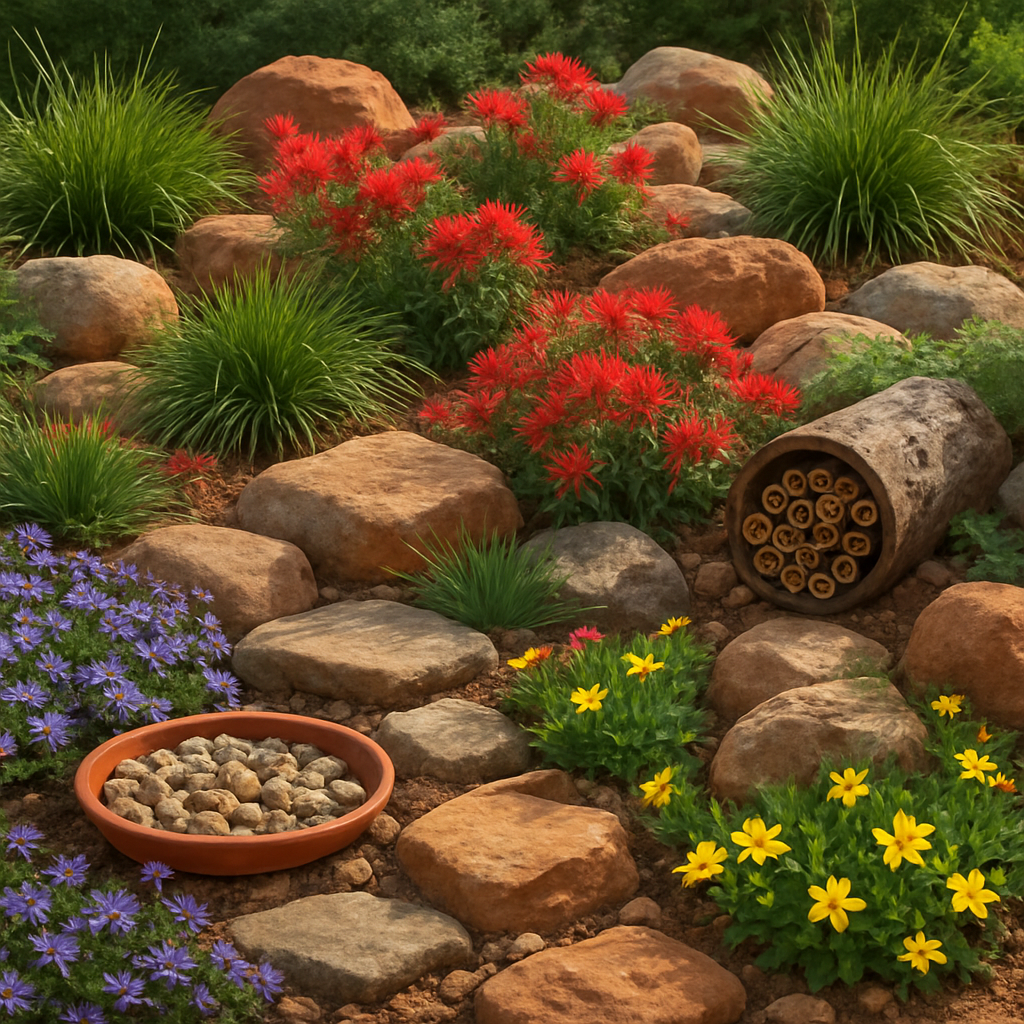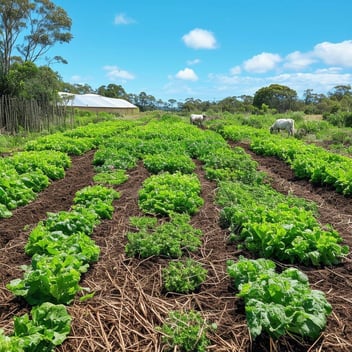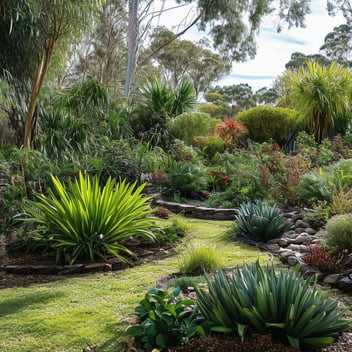Creating a Pollinator-Friendly Rockery Garden in Queensland
Introduction
In every Queensland backyard, a quiet revolution is possible. A rockery garden can be more than a showcase of sculptural beauty and drought-hardy plants—it can hum with life. By tailoring your rockery to attract and support pollinators, you’re not just cultivating colour and fragrance, but playing a vital role in supporting local biodiversity. These living mosaics invite bees, butterflies, and birds to dance among the stones, bringing vibrancy and purpose to your garden design.
Why Pollinators Matter in Queensland Gardens
Pollinators are the unseen workers of our ecosystems. In Queensland, native bees such as the Blue Banded Bee (Amegilla cingulata), tiny hoverflies, nectar-loving butterflies, and honeyeaters are critical to plant reproduction, food production, and maintaining the ecological balance. Without them, flowering plants fail to set seed, fruits don’t mature, and native bushlands suffer decline.
Encouraging these pollinators into your garden helps boost flowering performance, vegetable yields, and overall garden health—especially in a rockery setting where conditions can be harsher than conventional garden beds.
Understanding the Needs of Pollinators
A pollinator-friendly rockery caters to three core needs: nourishment, shelter, and safety.
-
Food: A diversity of flowering plants that bloom across all seasons is essential. Choose nectar-rich natives that offer both pollen and energy.
-
Shelter: Hollow logs, rocks, crevices, and tussocky grasses provide protection from wind, predators, and weather extremes.
-
Safe Habitat: Avoid artificial lighting nearby, and minimise disturbances like over-pruning or excessive soil compaction that can damage nesting sites.
When your garden offers year-round support, you create not just a rest stop, but a true home for local pollinators.
Essential Design Elements of a Pollinator Rockery
Rock placement is more than aesthetics—it plays a vital ecological role. Large boulders absorb warmth and release it slowly at night, helping cold-blooded insects regulate body temperature. Flat rocks double as basking platforms for native bees and lizards.
Incorporate different heights, textures, and densities of planting. Use tufts of Lomandra, grassy Dianella, and low mounds of Grevillea to create niches. This spatial complexity allows for more species to coexist, each finding its preferred microhabitat in your garden’s topography.
Top Pollinator-Friendly Plants for Rockeries in Queensland
Choose hardy, flowering species that suit Queensland’s subtropical climate and rocky soils:
-
Grevillea ‘Royal Mantle’ – A ground-hugging native with crimson nectar-rich flowers beloved by honeyeaters.
-
Scaevola aemula (Fan Flower) – Compact, blue-flowered and continuously blooming through warm months.
-
Hibbertia scandens (Climbing Guinea Flower) – A scrambling yellow beauty ideal for trailing through rocks.
-
Melaleuca thymifolia – Compact, fine-leaved with soft mauve bottlebrush-like flowers.
-
Eremophila species – Hardy, drought-tolerant and incredibly attractive to native bees and nectar feeders.
-
Brachyscome multifida (Cut-leaf Daisy) – Low spreading plant covered in lavender blooms, ideal for rock edges.
-
Plectranthus ‘Mona Lavender’ – Shade-tolerant, long-flowering, and attractive to bees.
Planting with seasonal layering ensures nectar is available year-round—from early spring to the depths of winter.
Providing Water and Nesting Sites
Even the most drought-adapted pollinators need water. Incorporate:
-
Shallow dishes of fresh water with pebbles or twigs for perching.
-
Damp mud patches for butterflies and solitary bees needing minerals or nesting materials.
-
Bee hotels with bamboo tubes or drilled hardwood blocks placed under sheltered eaves.
-
Bare patches of undisturbed soil for ground-nesting bees, often overlooked but essential.
Avoid overwatering your rockery, but ensure at least one consistent water source exists for your pollinators.
Organic Practices to Protect Pollinators
Chemicals are the arch-nemesis of pollinator populations. Replace synthetic pesticides with natural deterrents such as neem oil, garlic sprays, or biological controls. Aphids? Invite lady beetles. Caterpillars? Let birds do the work.
Use companion planting—like marigolds near herbs or lavender with vegetables—to deter pests and attract beneficial insects. Every chemical-free decision you make multiplies the life force of your garden.
Seasonal Maintenance Without Disturbance
Pollinator-friendly gardens thrive on subtlety. Prune only when necessary and avoid major cleanups during late autumn and winter when many insects are hibernating in stems, leaves, or the soil. Deadheading spent blooms encourages reblooming but leave a few to go to seed—native birds and seed-eating insects will thank you.
Replace annuals gradually to preserve existing nests and minimise soil disturbance. Observant, gentle maintenance ensures pollinators return season after season.
Conclusion
A rockery garden in Queensland can be more than a design statement—it can be a sanctuary. By embracing pollinator-friendly practices, you invite resilience, colour, and harmony into your outdoor space. Each stone, each bloom, becomes part of a living ecosystem—a garden that not only survives, but sustains. In a time when pollinators are under threat, your backyard rockery can stand as a beacon of refuge and renewal.




